Describing your work experience in a resume is more of a challenge than many would think. Including your relevant experiences, adding examples and descriptions of the jobs, and providing all relevant information about the projects you have worked on can be daunting.
The biggest challenge is to provide a concise and precise description of your work accurately and coherently. A prospective employer should clearly understand your resume, the jobs you have held, your skills, and your previous responsibilities.
Furthermore, they should also include your accomplishments and your areas of expertise. Adding your experience to a resume could be tedious, especially if you do not have much experience with writing resumes.
This comprehensive article will provide tips and examples for writing the experience section of your resume and guide you to present it in the best possible way.
Free Examples for You
When crafting your resume, highlighting your work experience is essential to showcasing your professional background and demonstrating your expertise. In this article, we provide a range of examples to inspire and guide you in effectively presenting your past roles and responsibilities.
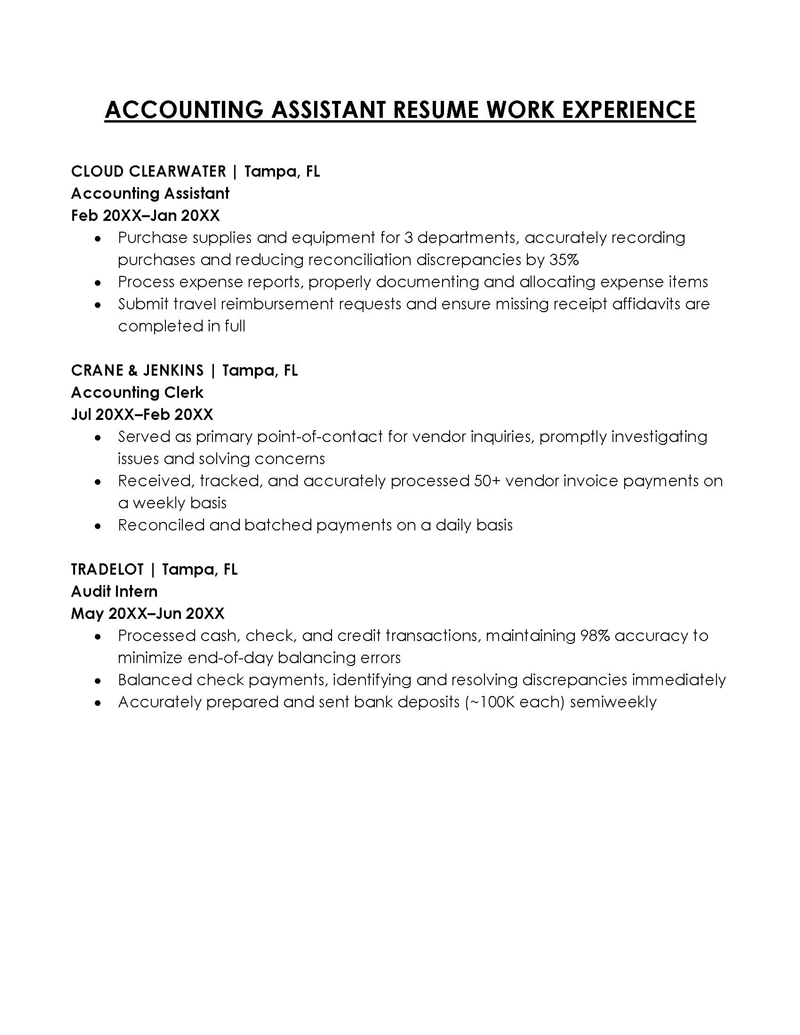
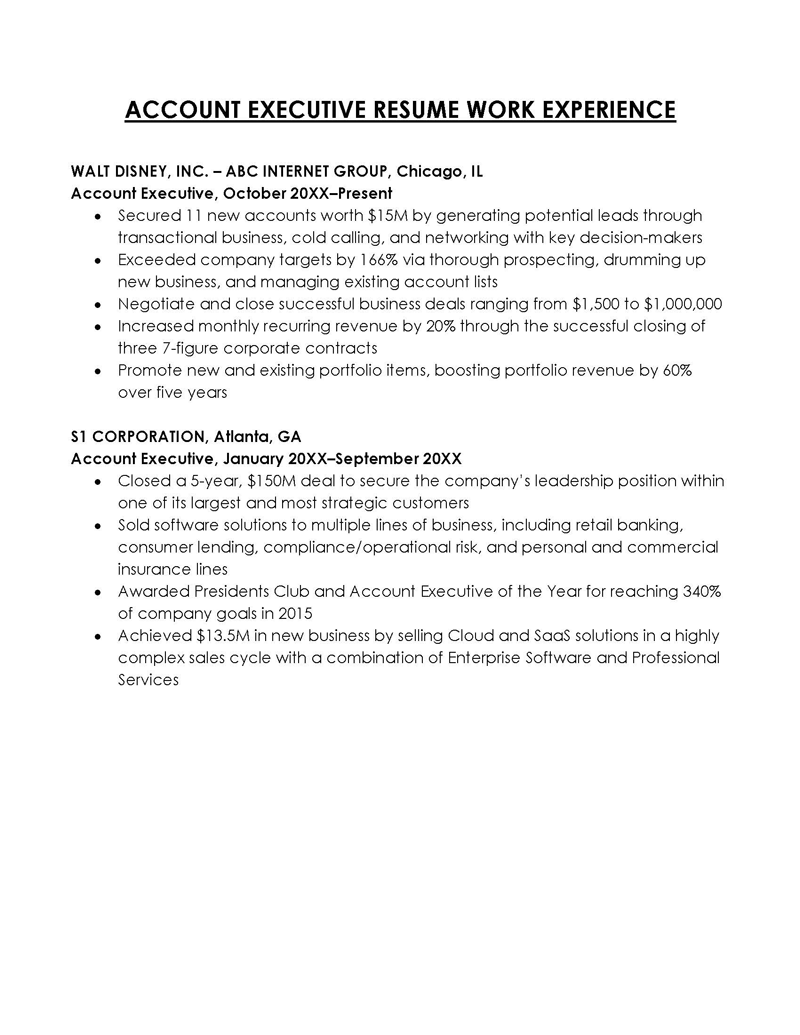
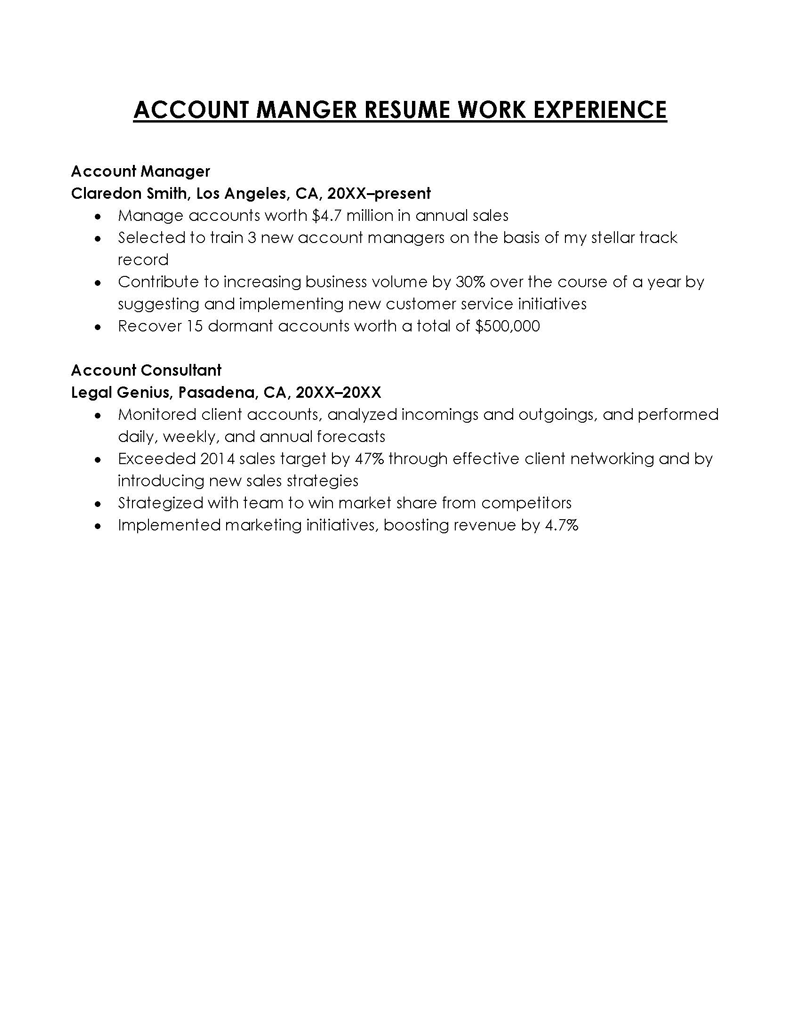
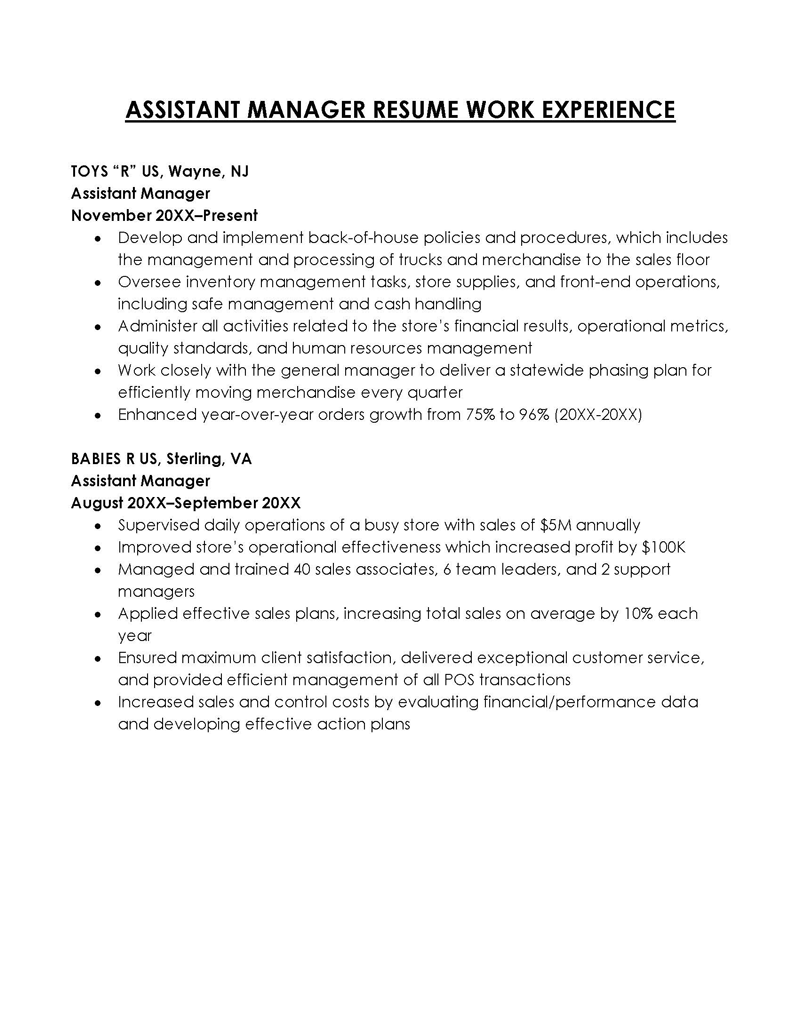
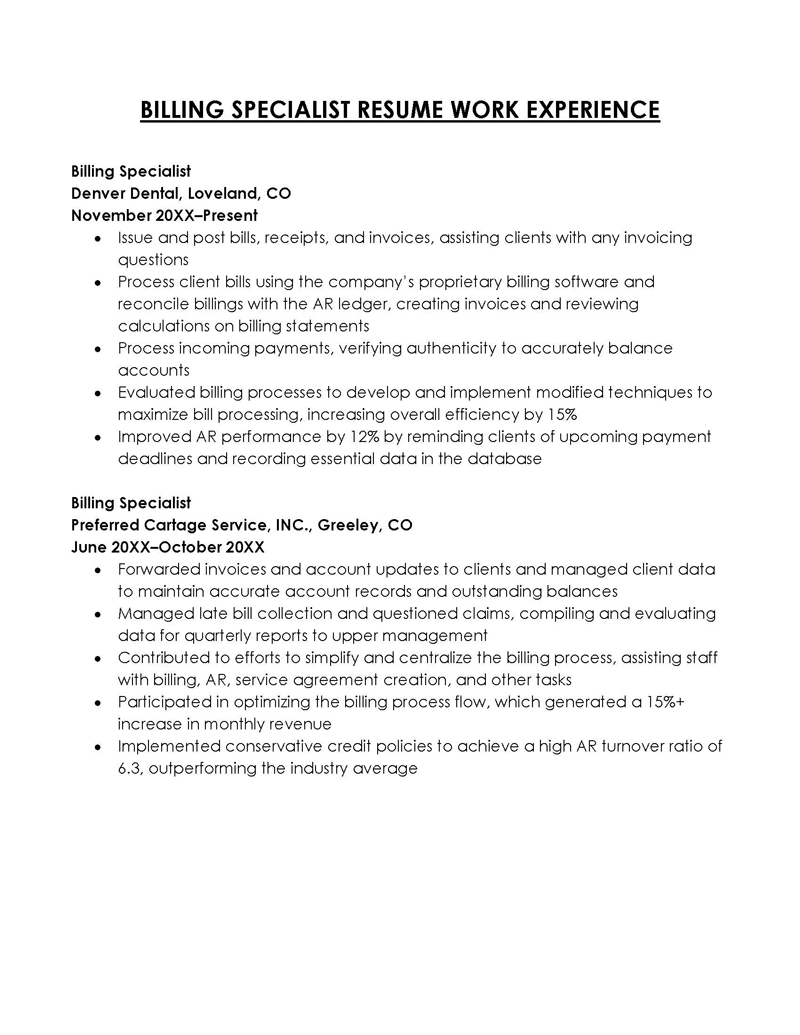
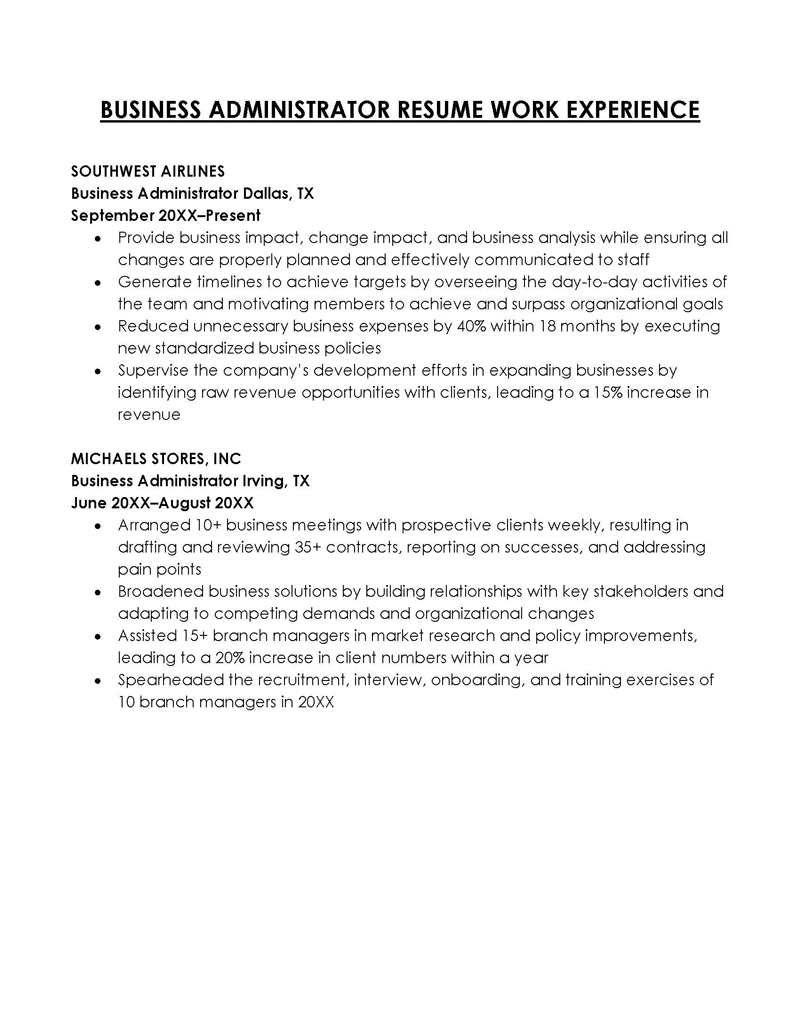
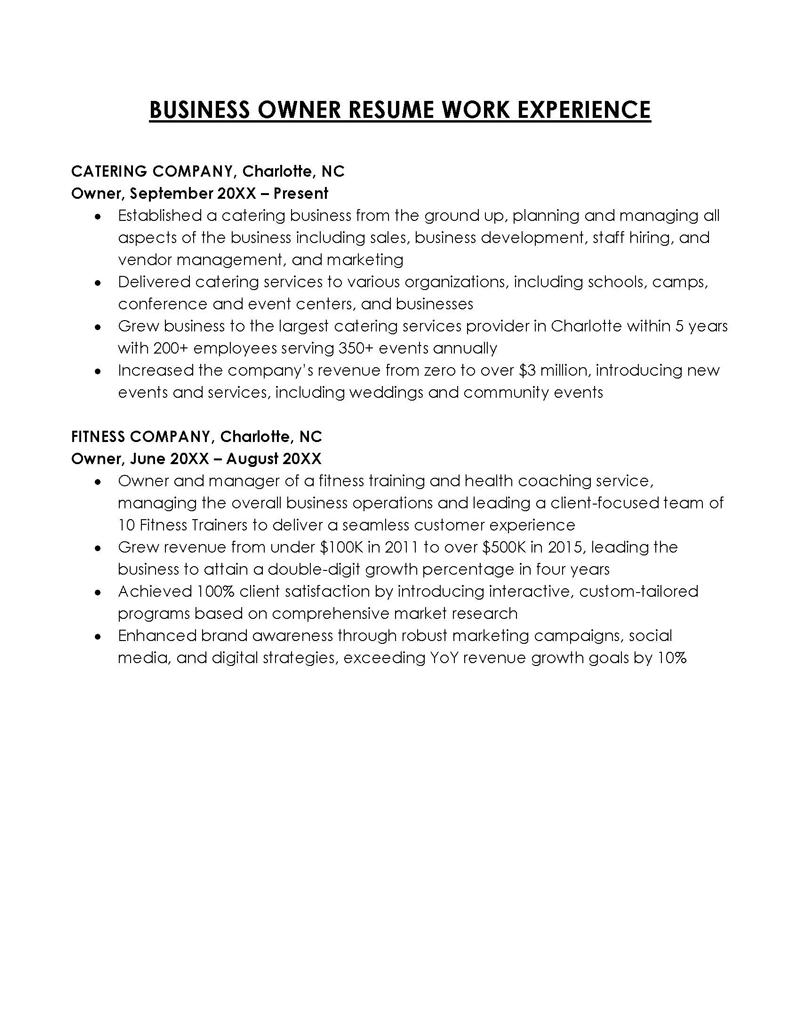
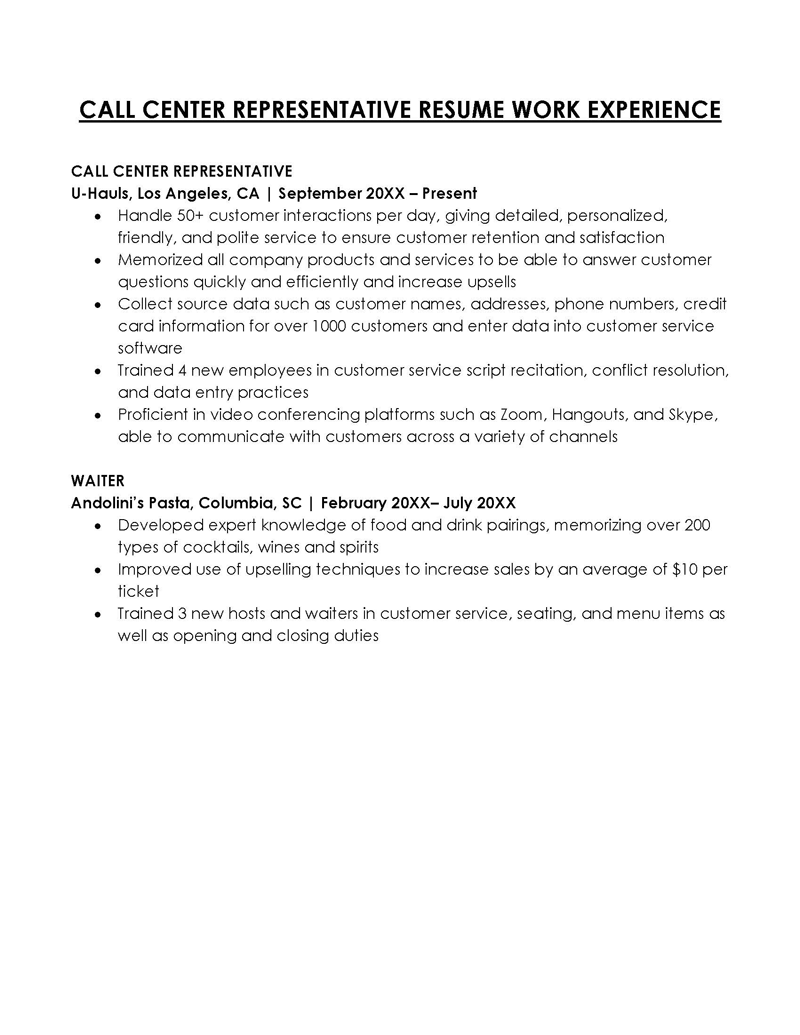
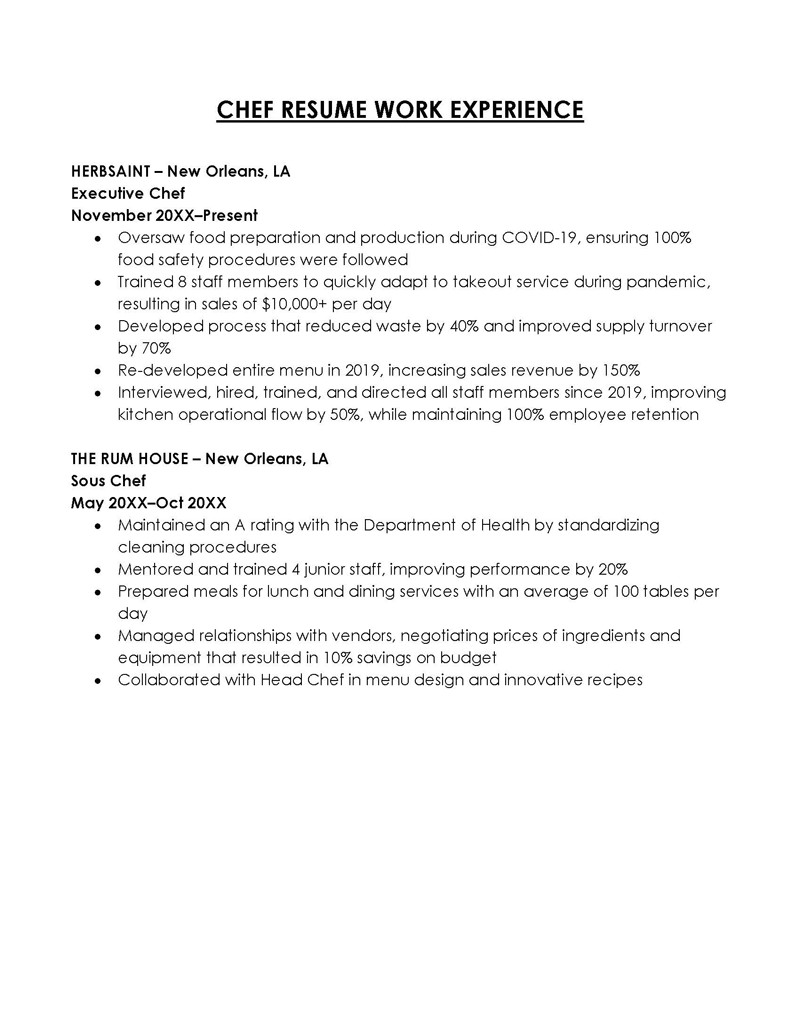
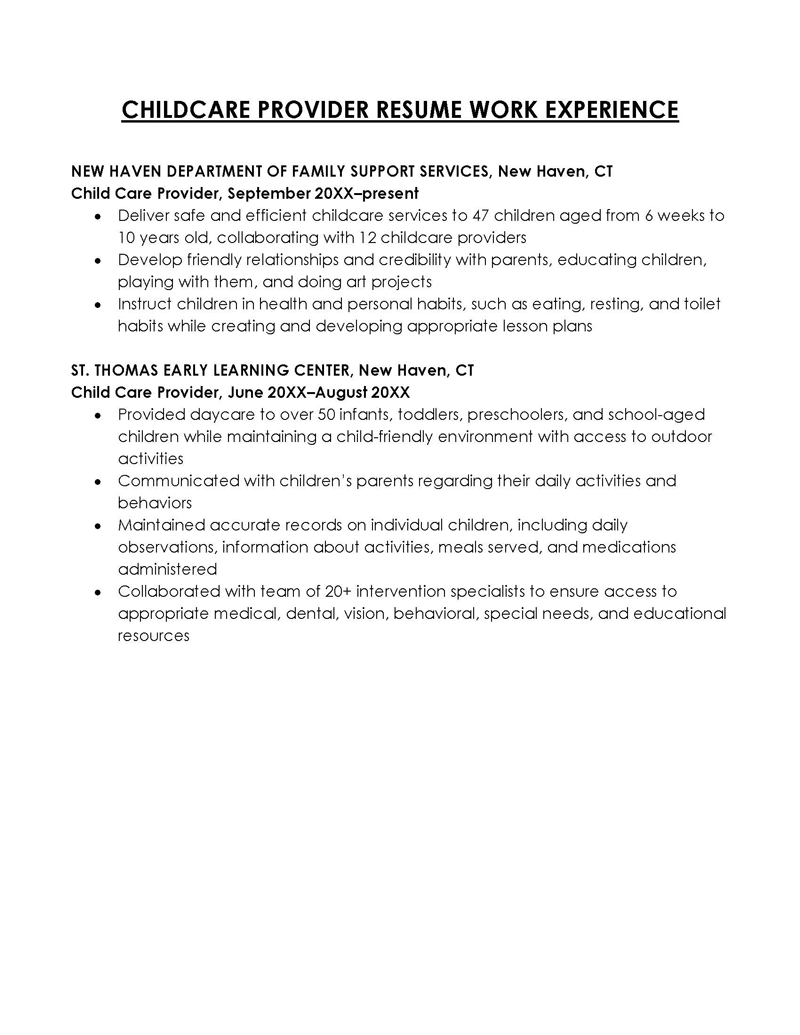
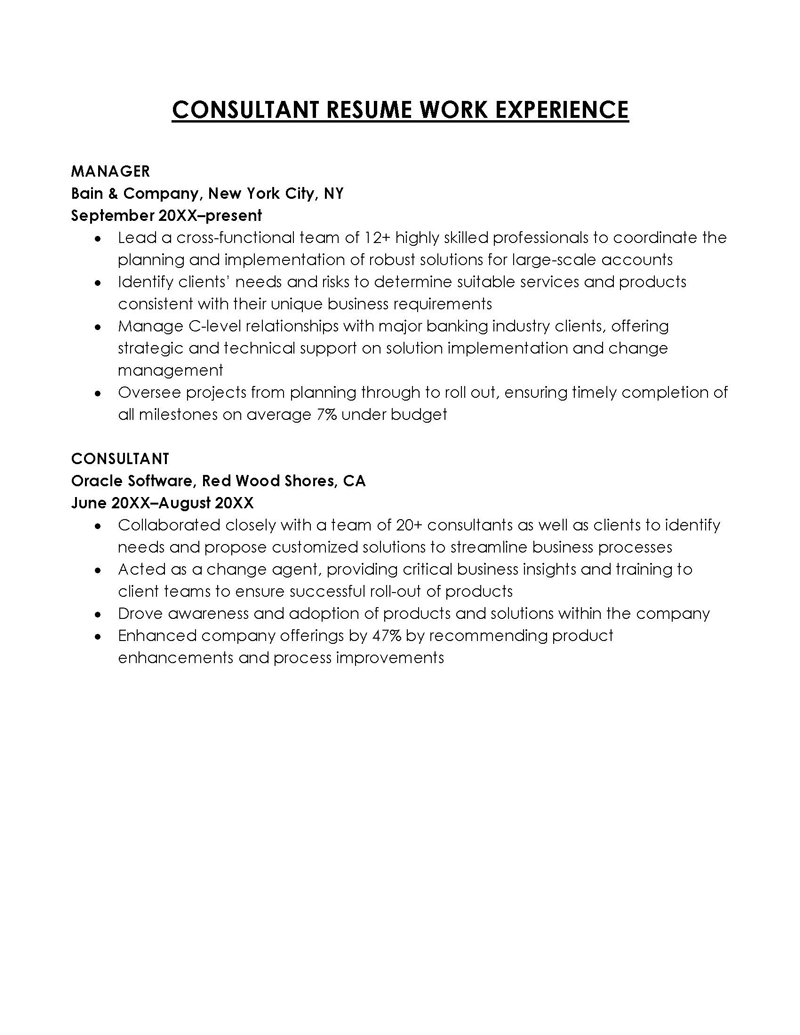
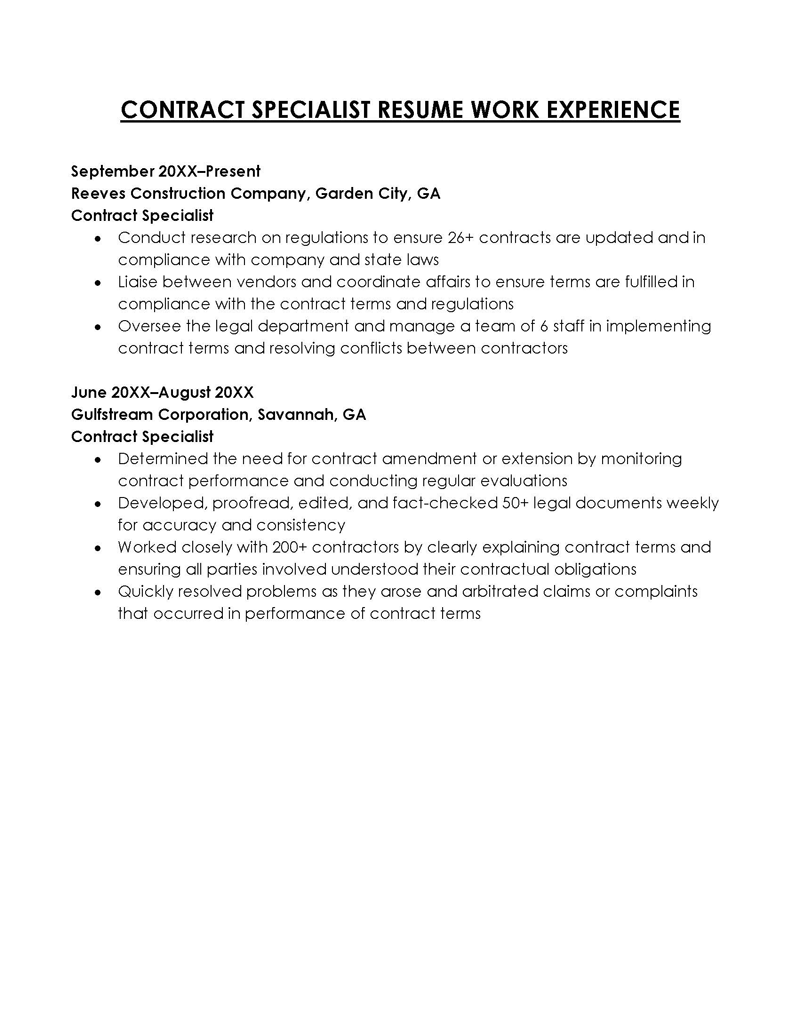
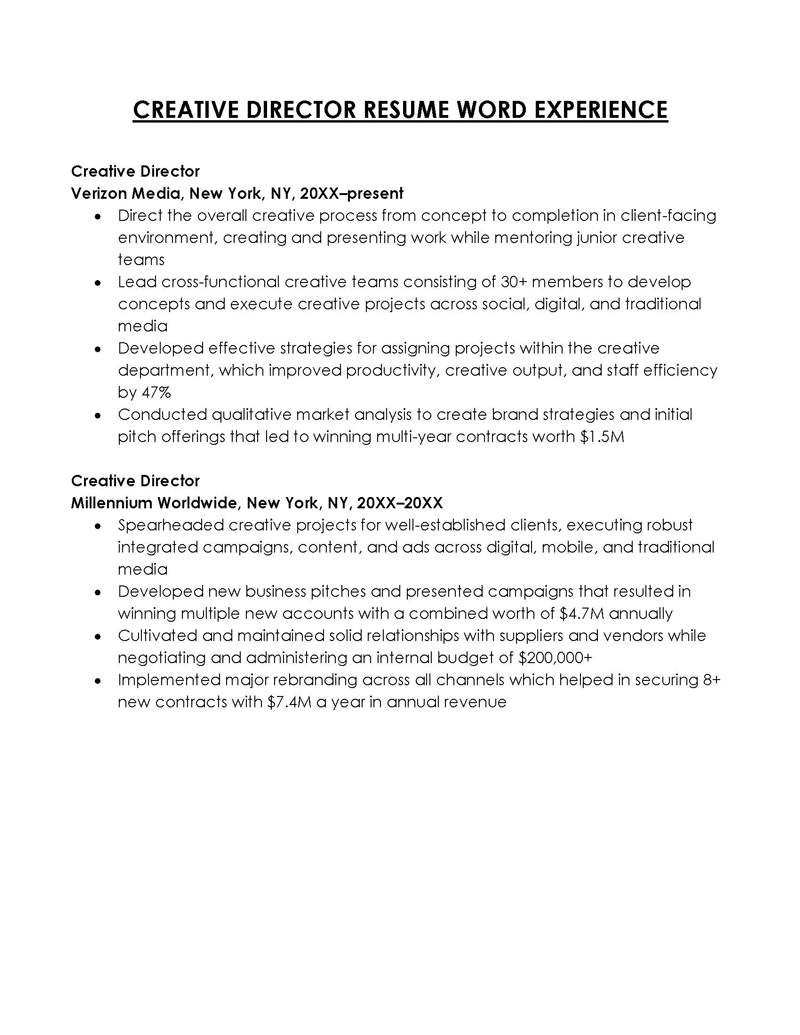
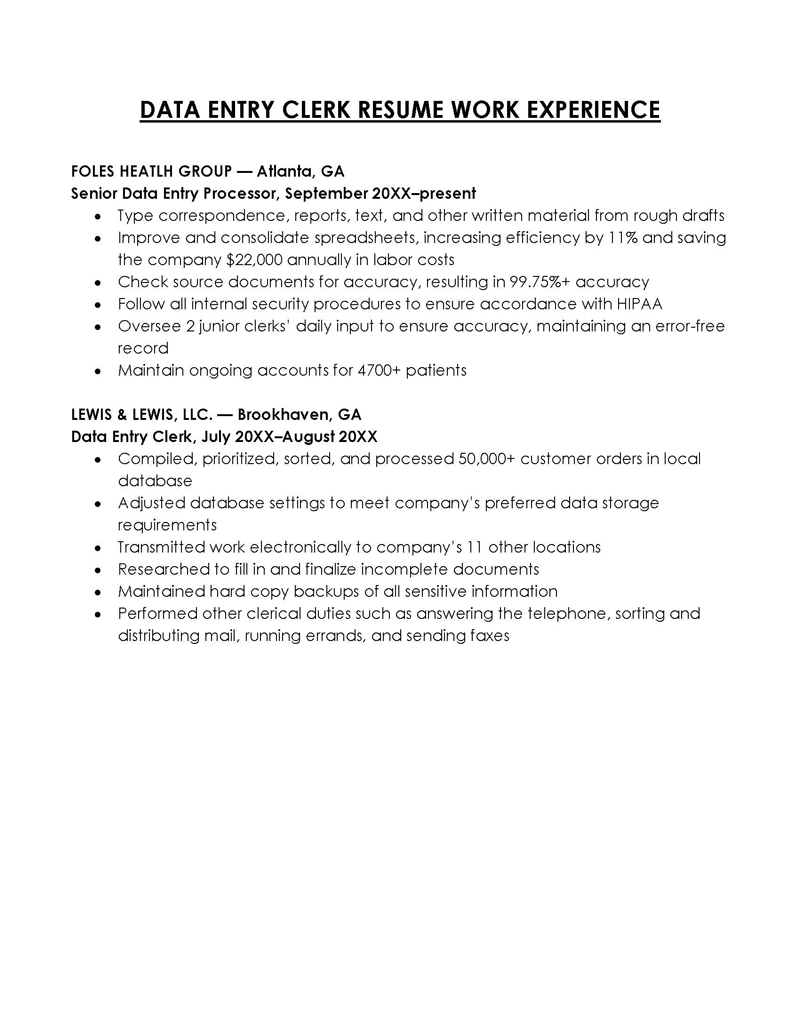
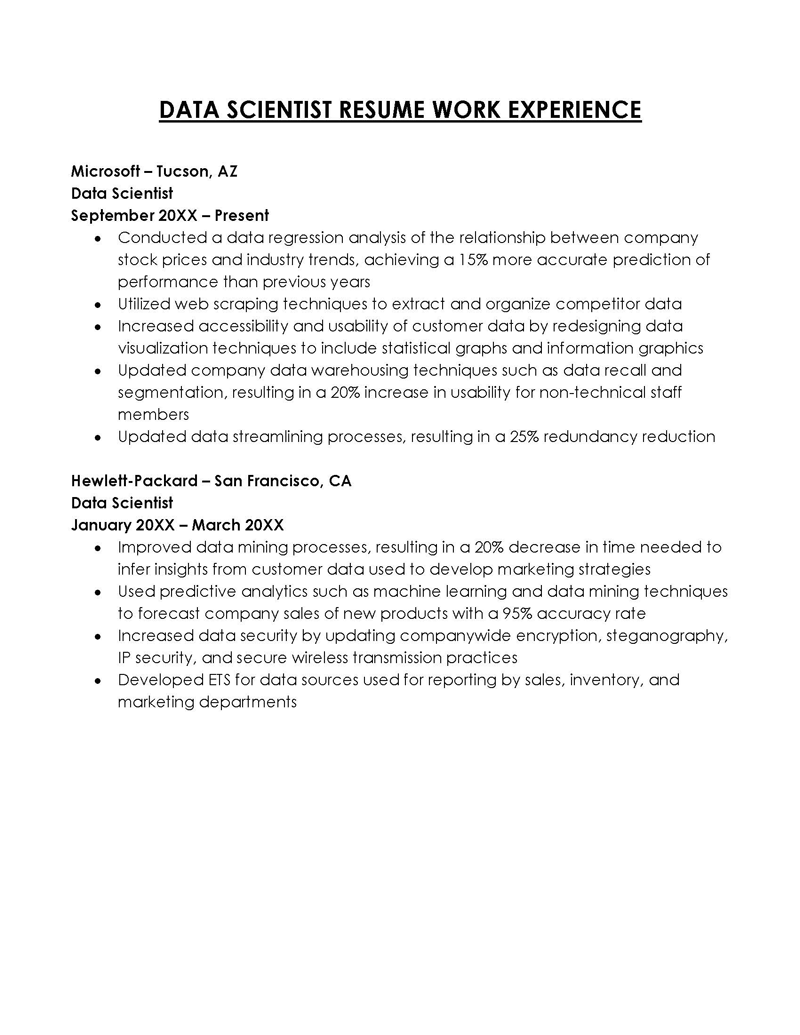
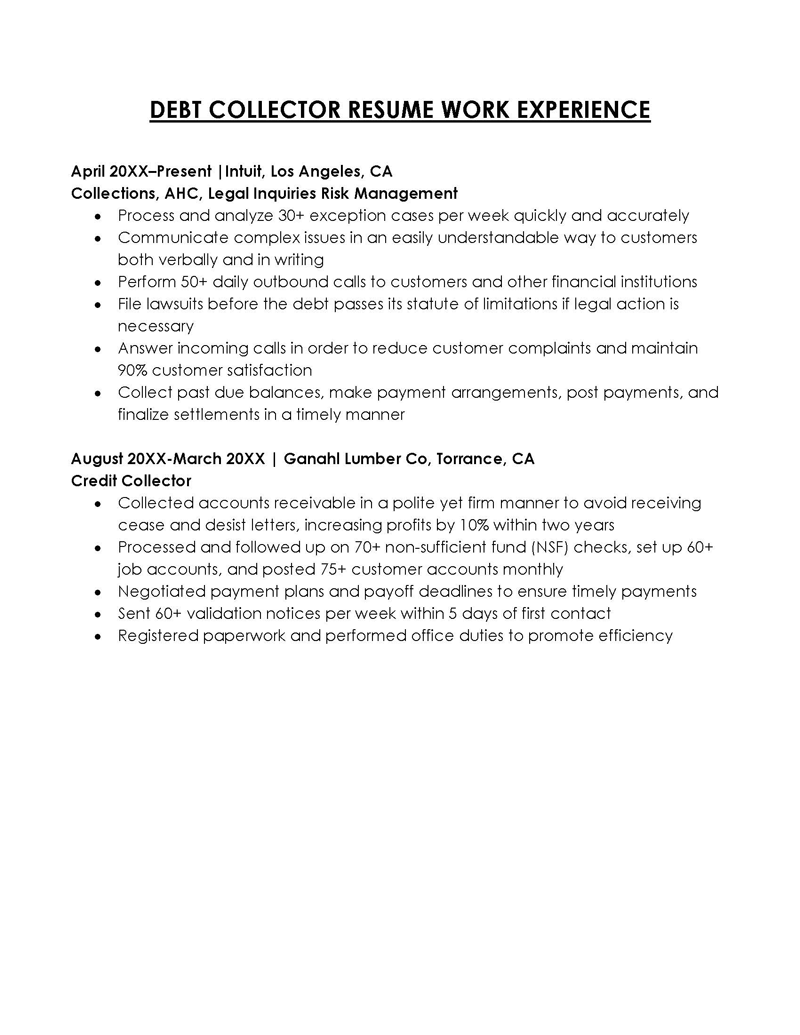
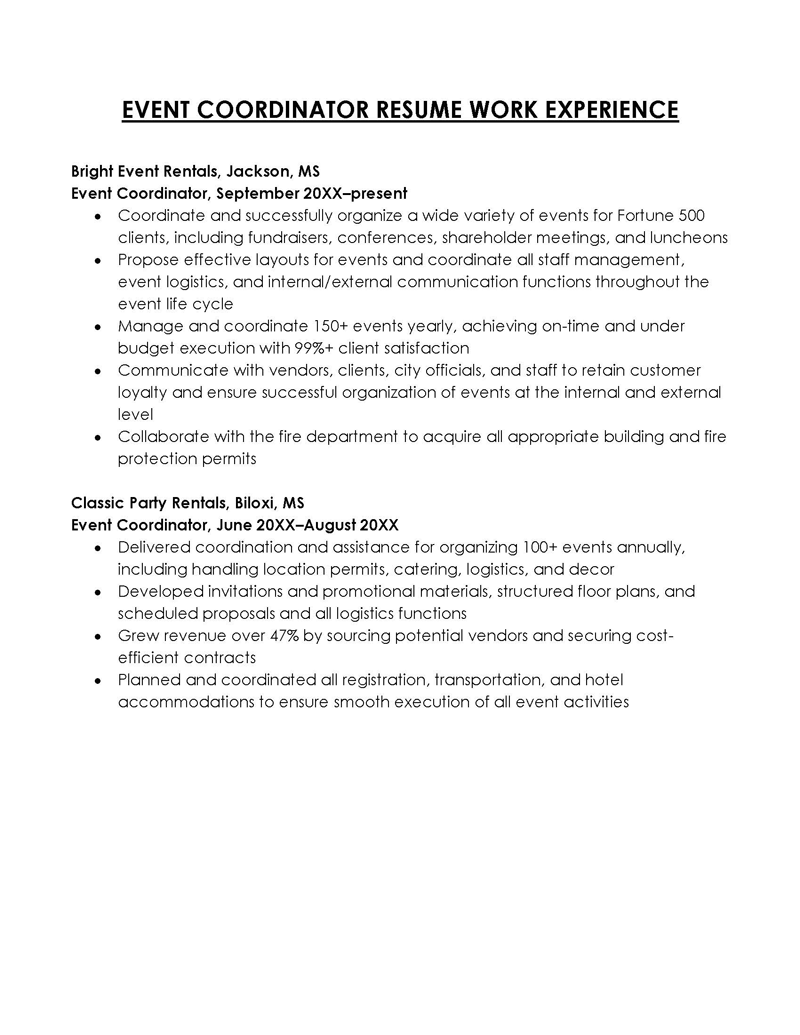
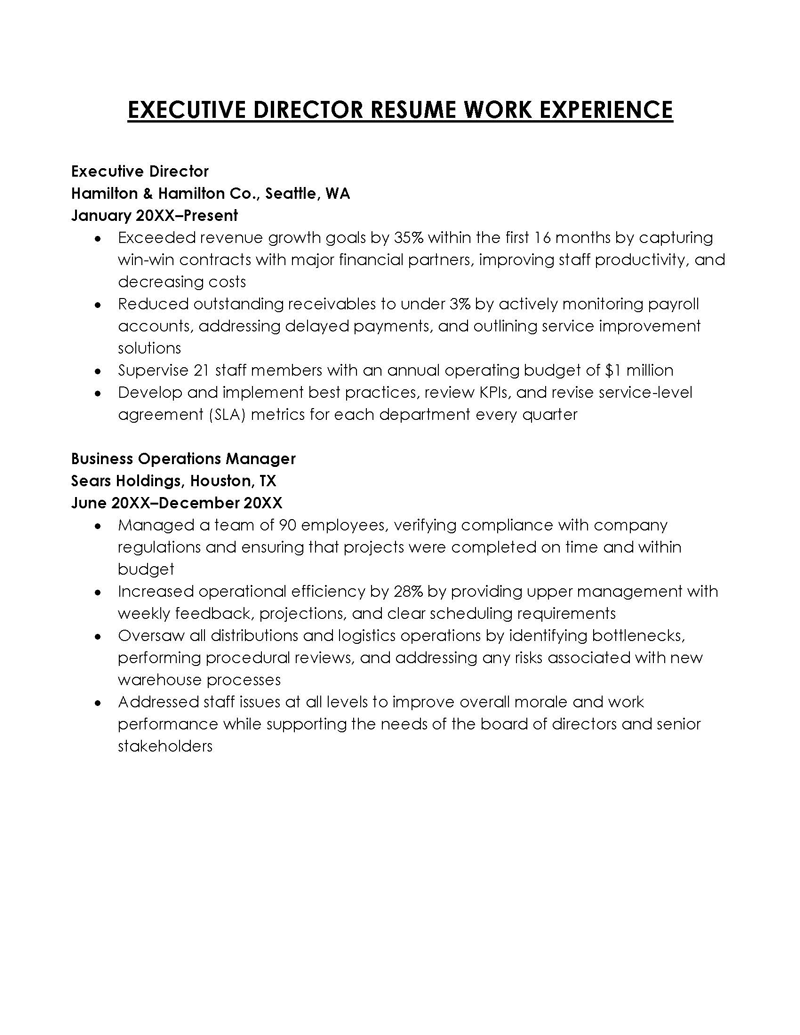
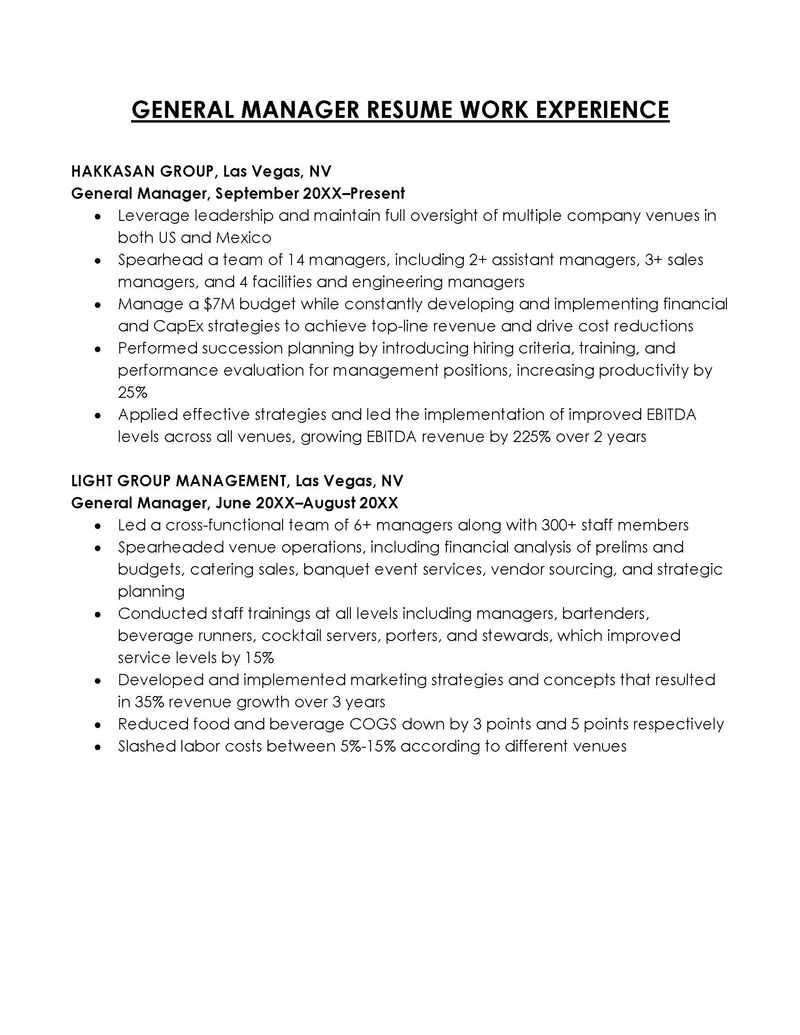
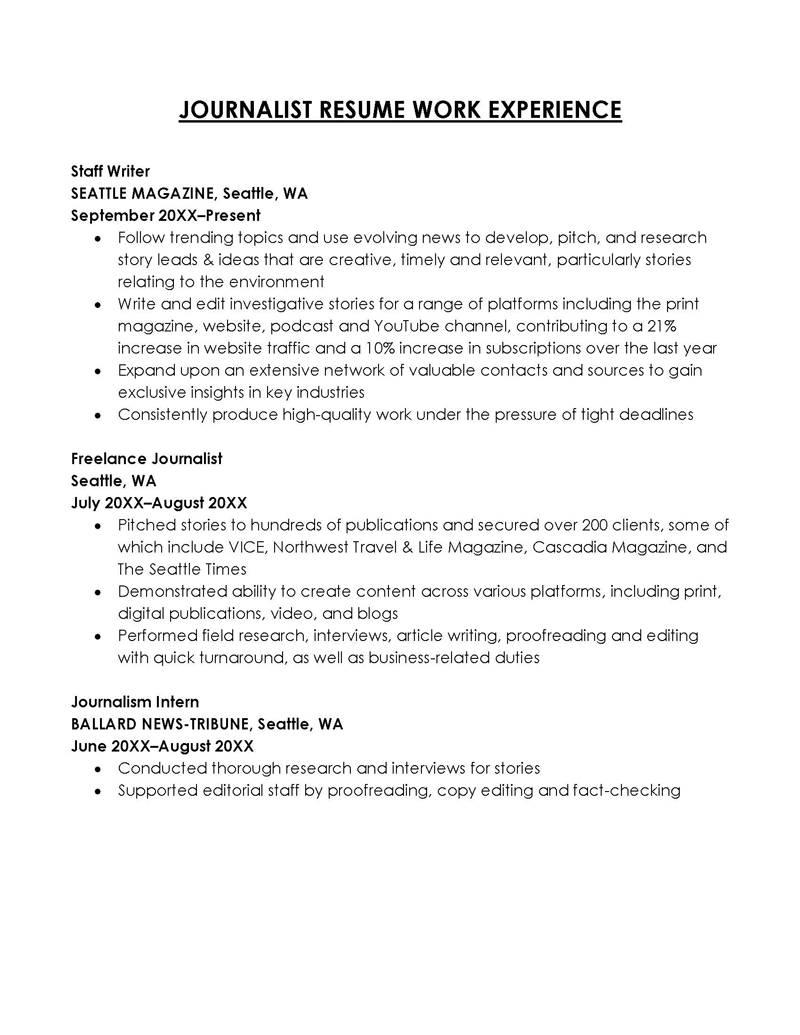
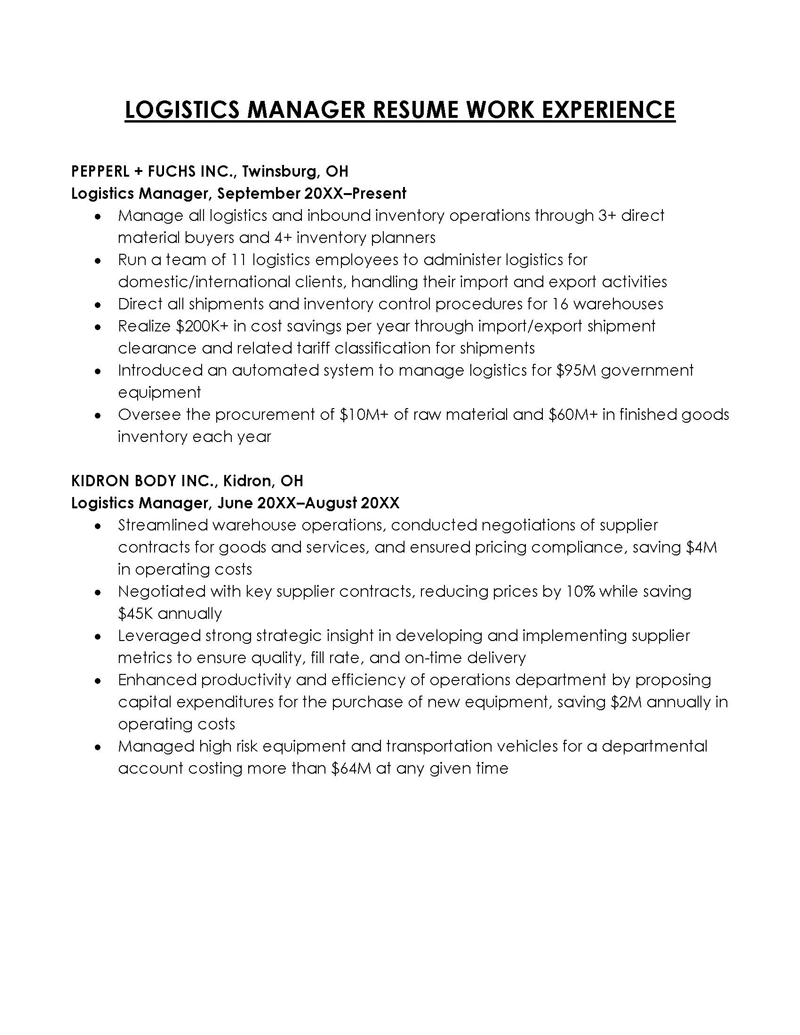
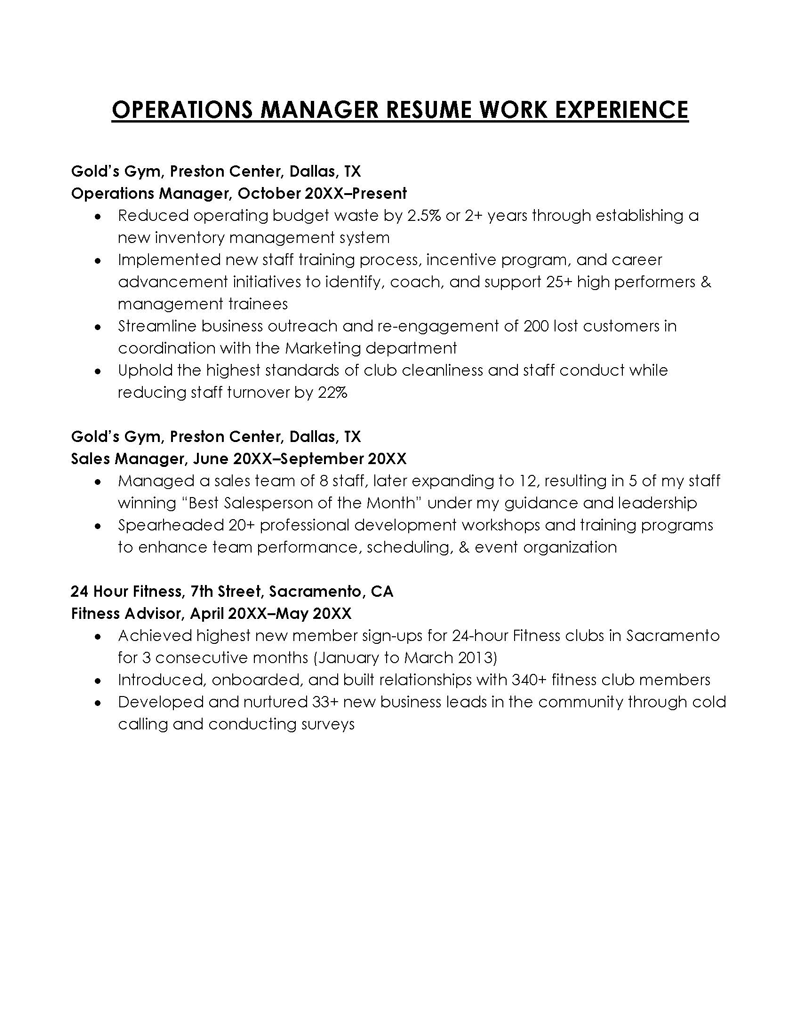
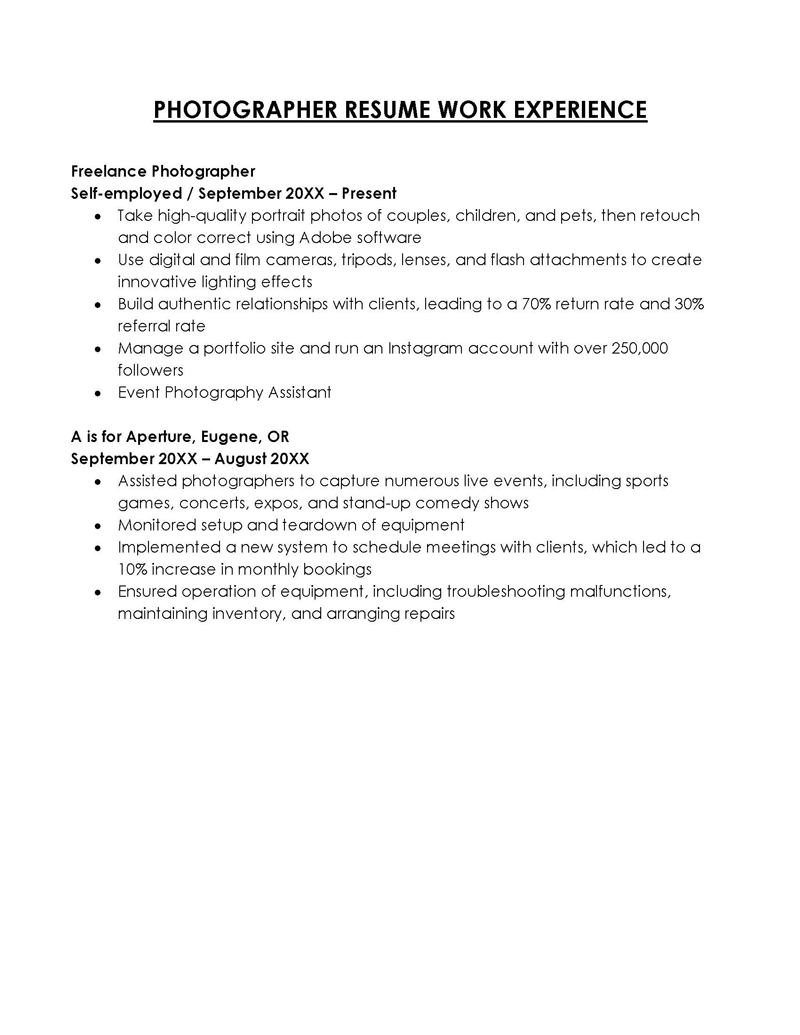
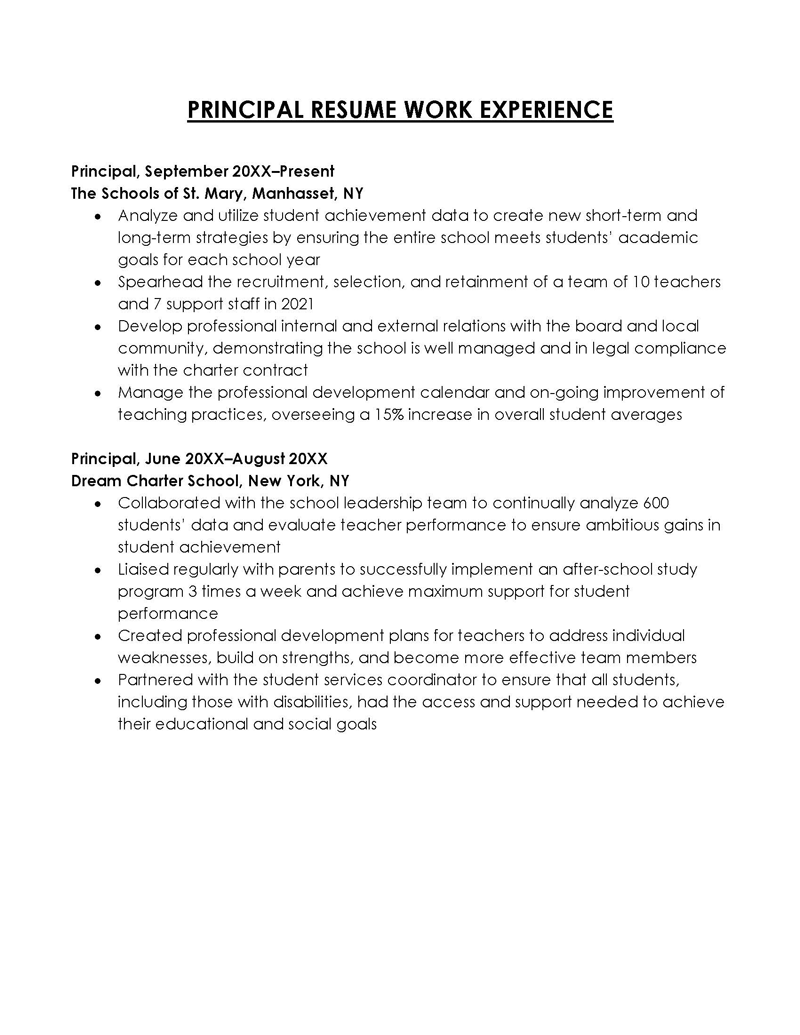
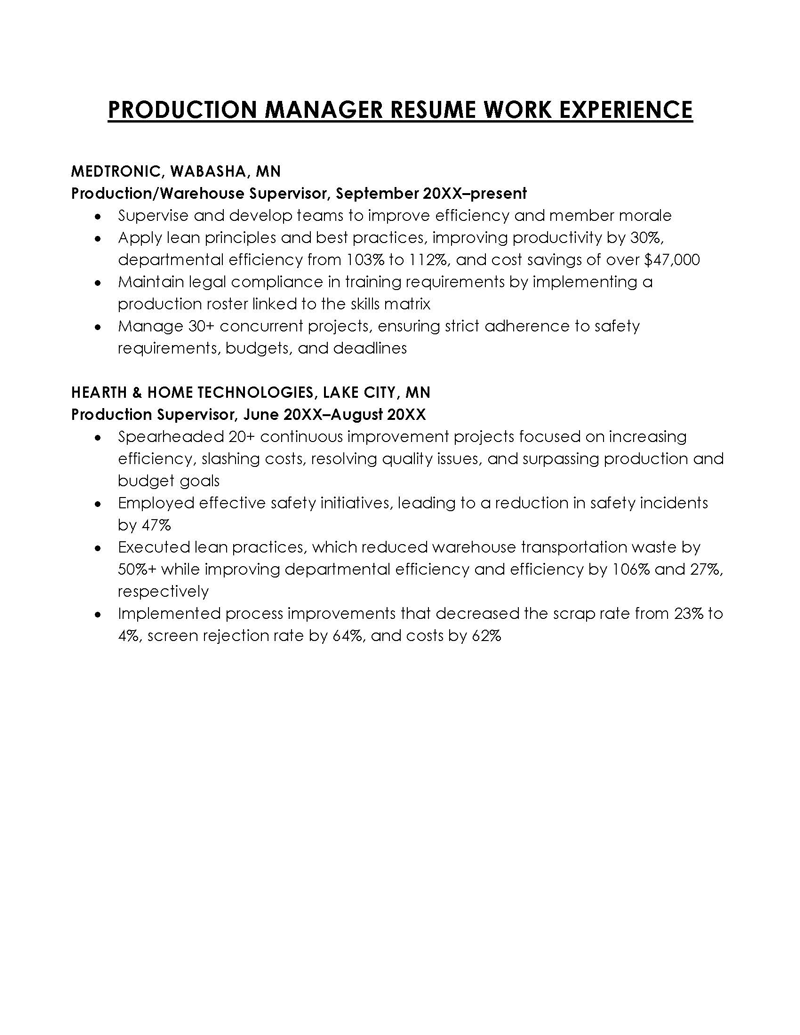
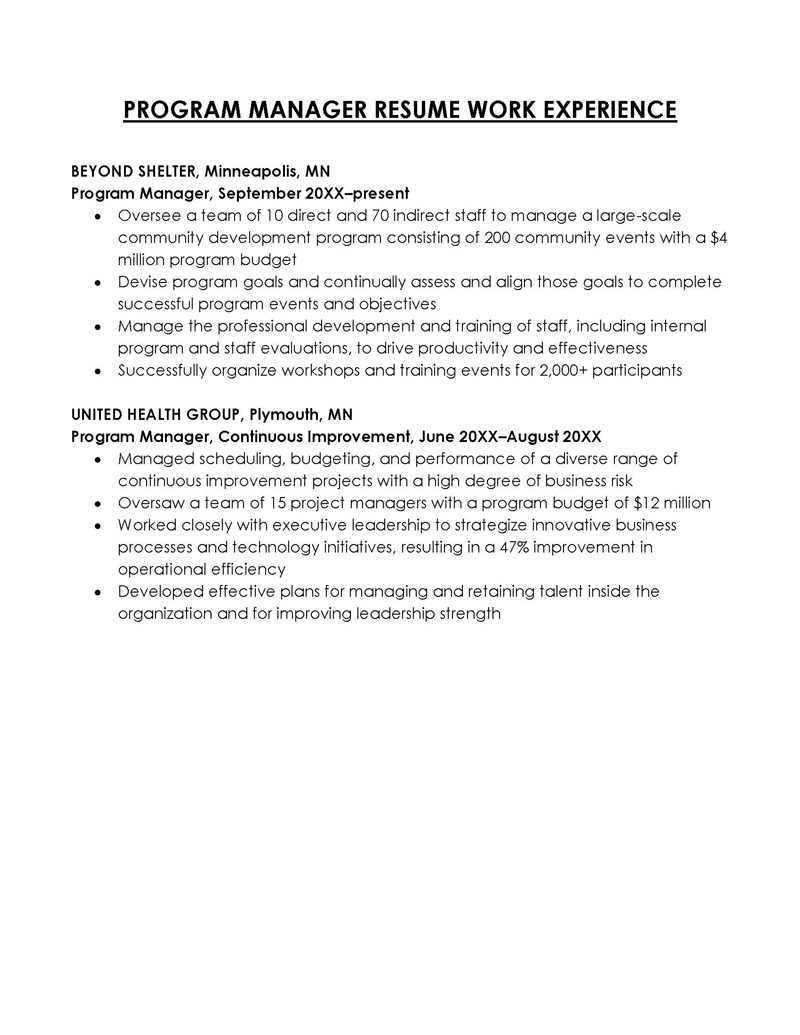
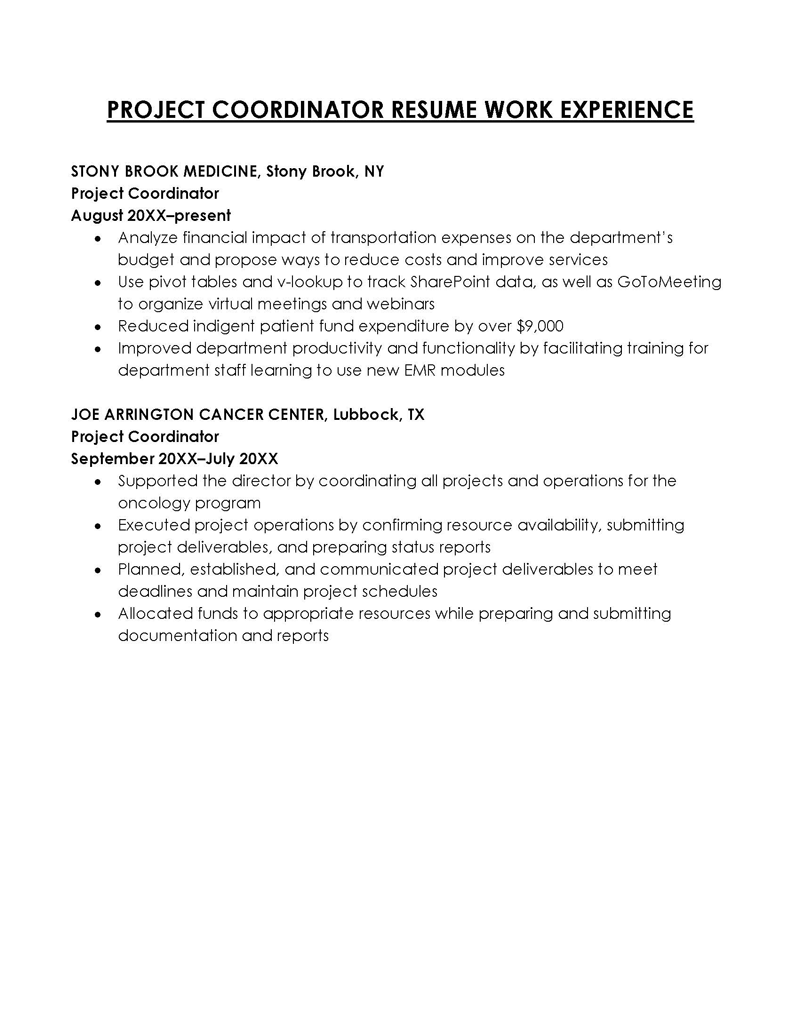
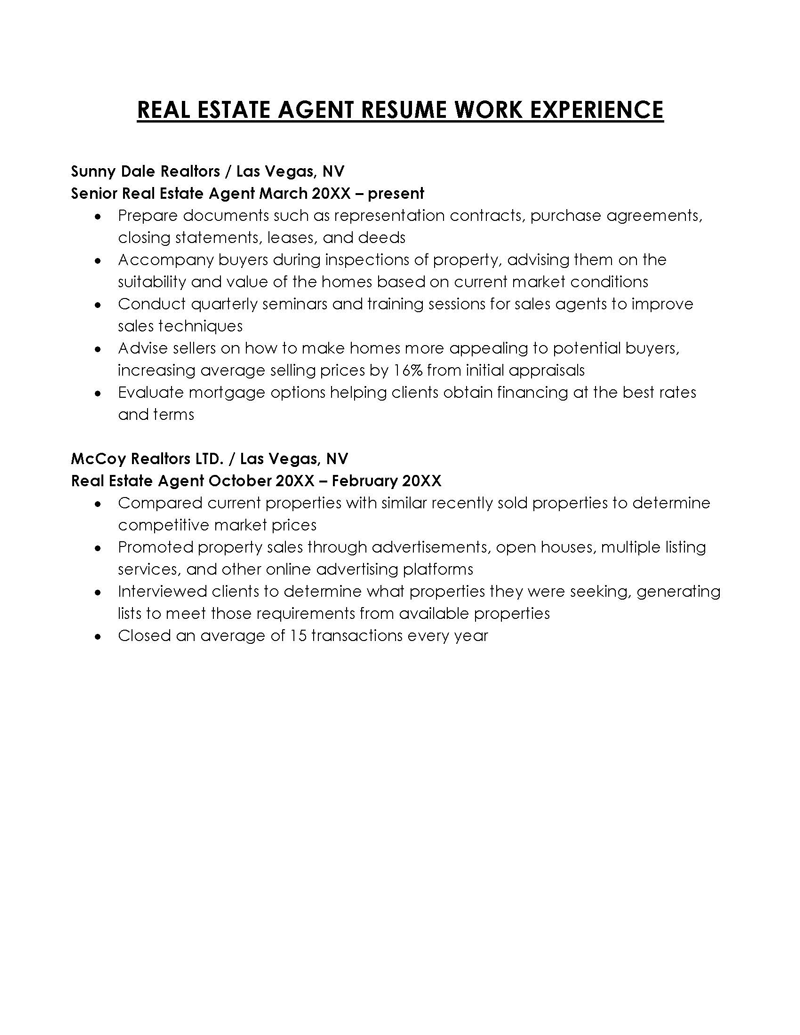
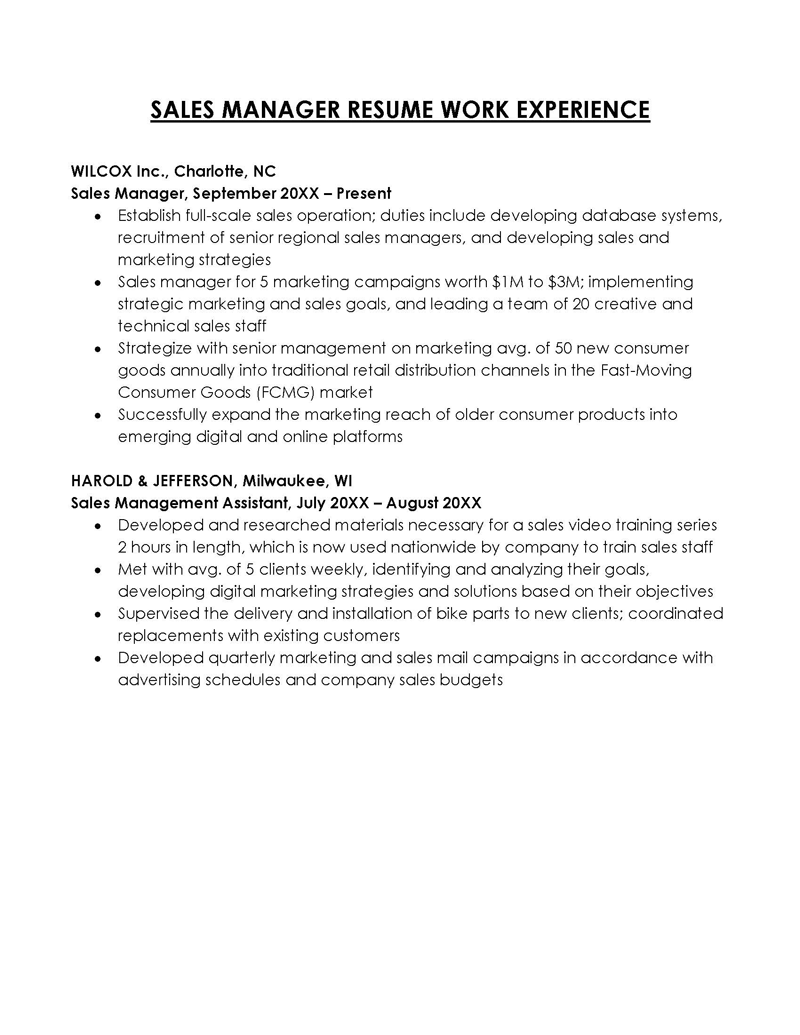
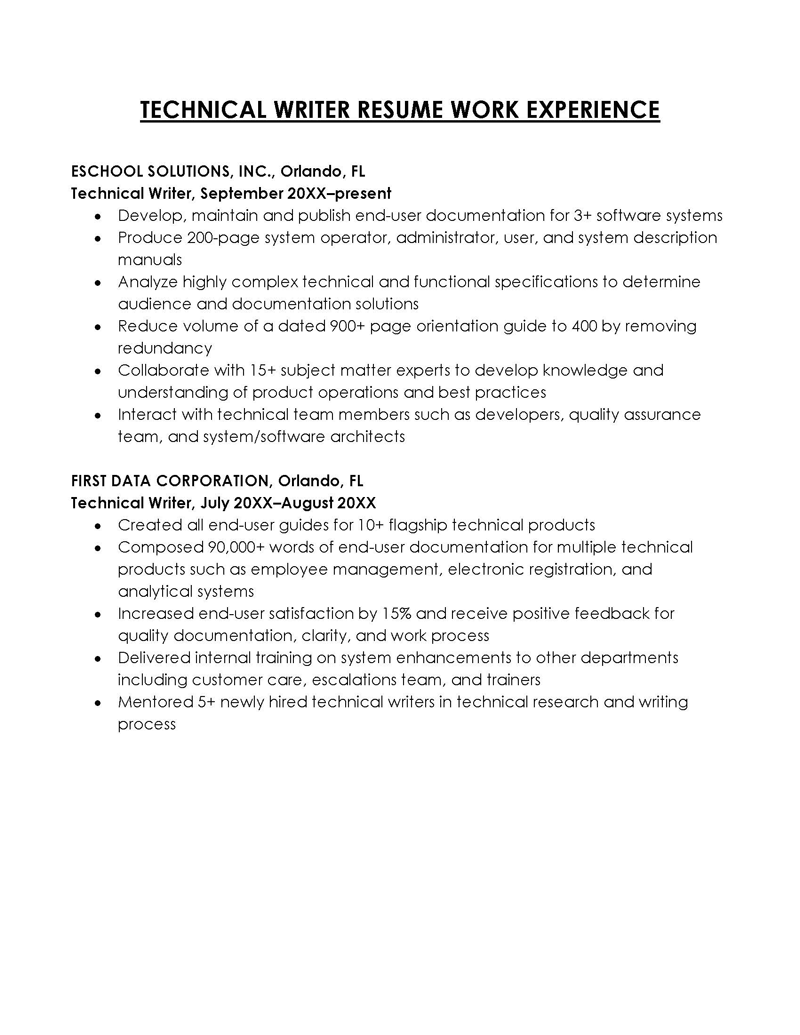
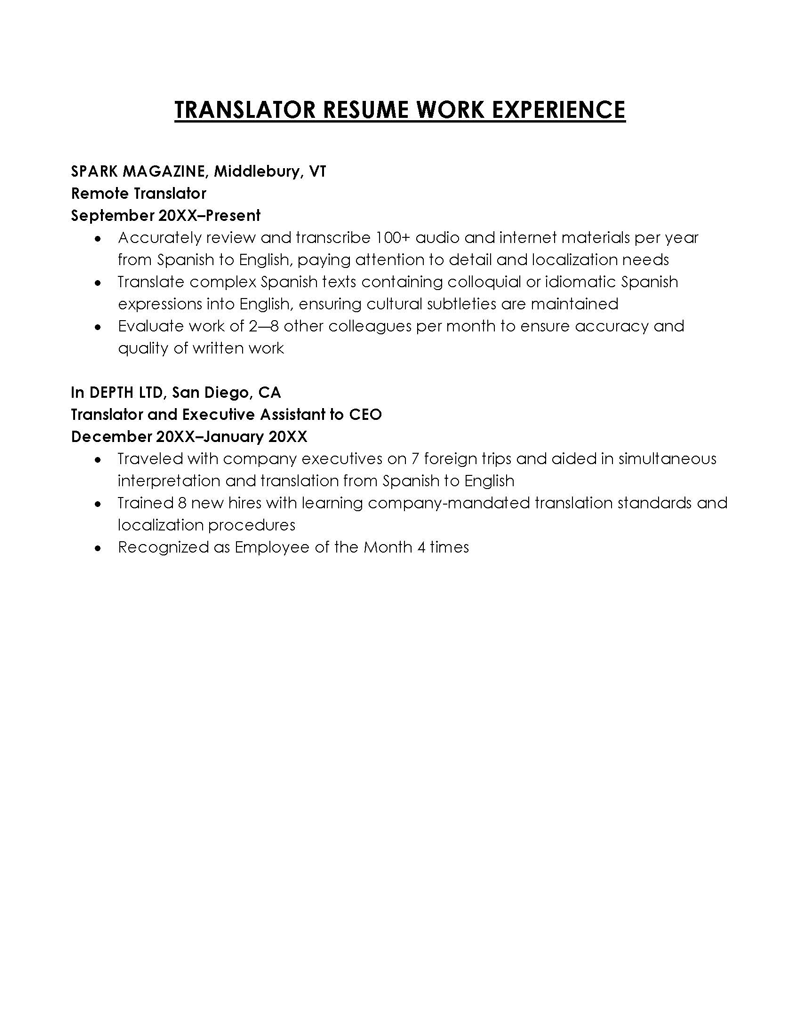
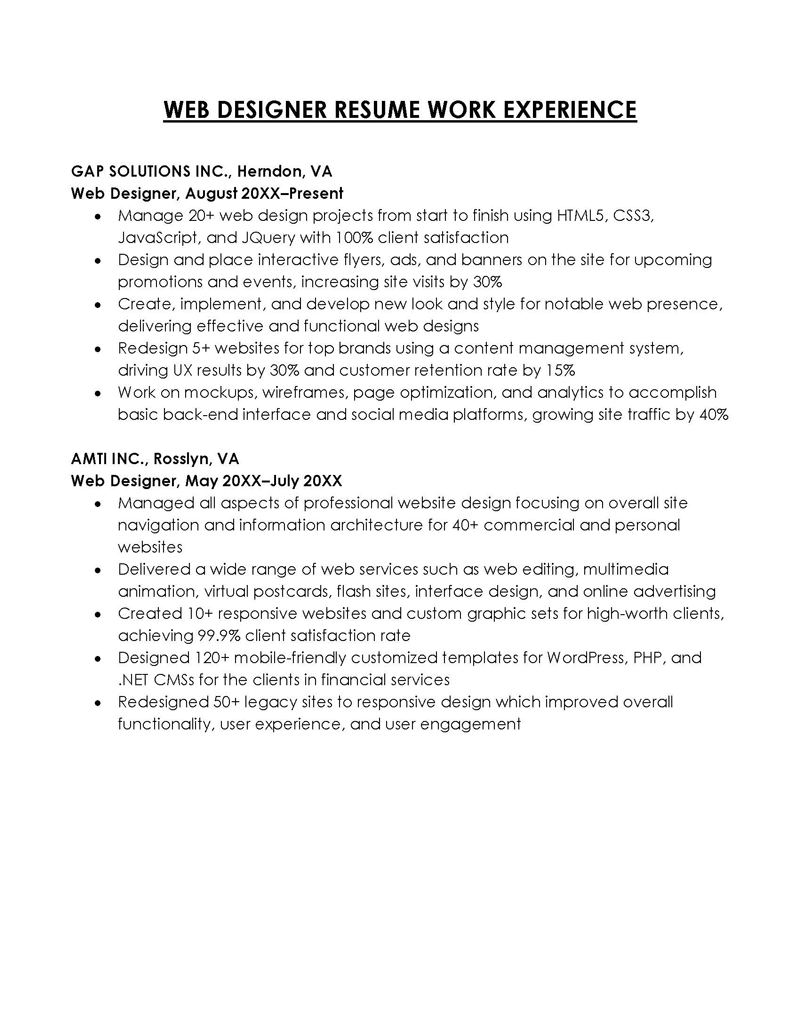
Why is the work experience section important?
The details of your work history are a vital element of your resume for prospective employers. Most of them regard it as the most important hiring factor.
They typically choose candidates based on their previous experience. The summary of your employment history is thus meaningful for prospective employers, and they will most likely read that section first when reviewing your resume.
The experience section tells them all they need to know about your skills and expertise. Writing an engaging resume with rich details about your experience can increase your chances of getting an interview.
Four Factors to Consider Before Writing
The experience section of your resume should contain the most relevant information regarding your work.
Since there are several ways to format this section, here are the four main formatting principles to consider:
Relevance
When describing your previous experience, consider the relevancy of that information for the current position you are applying for. Since this section highlights your achievements and skills, it is crucial to show that you are qualified for the job. The emphasis should be on your professional background that matches the field of your new job.
Timelines
List your relevant work experience in the following manner:
- Dedicate the first section to the most recent job positions and roles.
- Mention your earliest jobs at the end.
Include all relevant examples to showcase your work experience within the last five years. However, resumes for senior or academic positions should typically include a longer timeframe.
Longevity
You should leverage longevity in your resume if you have held any previous positions that are similar to the job you are seeking.
Many employers value longevity as it demonstrates your dedication and commitment. It means you are ready to commit to a new job for the long term. It also increases your chances of getting promotions in the future.
Position
Different positions give you different types of credibility with employers. Since seniority is valuable and shows a higher level of responsibility, mentioning that you have worked in senior positions can increase your chances of getting an interview.
EXAMPLE
Previous experience as a manager significantly improves your chances of getting hired when applying for an office manager’s position.
Three Ways to Format
In some situations, job applicants may have career gaps or insufficient relevant work experience. It would be best if you did not hide the lack of relevant experience or career gaps in your resume, since hiring managers and potential employers will probably notice if you try to. Similarly, many people have held consistent jobs and have a steady job history.
Since both scenarios are entirely different, it would be efficient to use the same resume format for both situations.
Different resume formats allow you to highlight the skills in your resume and mask the lack of relevant experience, while others present your consistent work history in an organized way for maximum impact.
Discussed below are the main types of formats for resumes.
Chronological format
A chronological resume lists your most recent job experiences first and is suitable for people who are experienced and have no career gaps. Since the goal is to showcase your career advancement, use this format to describe your professional progression throughout your career.
Functional format
Candidates without a relevant work history or career gaps should use this format. The functional resume format allows applicants to focus on their strengths by adjusting their accomplishments to the current job requirements.
You can do that by listing the names of previous companies and durations of employment. Choosing this resume format is an excellent way to bridge career gaps and make your employment history more appealing to hiring managers.
Combination format
The combination resume format is the most flexible solution for effectively describing your work history. It is a combination of chronological and functional formats. It allows you to focus on your strengths by mentioning your professional experience and listing it first in the resume.
Since a hybrid resume incorporates structural elements of functional and reverse-chronological resumes, it is an excellent option for anyone with a several-year career gap.
What Information Should You Include in the Work Experience Section?
Here is a list of the six essential details to include in the experience section of your resume:
Name of companies you worked for
Create a list of your former employers with the official names of the companies. List the most recent names first. A general principle is to list at least three employers, with the employment durations for each company.
Locations of the companies
While there are no requirements regarding providing the physical addresses of your former employers, you should mention their cities and states.
Employment dates
Use the standard month-year format (Feb. 2015–Dec. 2021) when listing your employment dates. In addition, you should provide details on the start and end dates of your employment with each company.
Job titles
Specify the titles of the positions you held in previous companies and do not hesitate to provide details. Avoid the use of acronyms when referring to your job titles. Also, write the complete job title to accurately convey the position you held.
EXAMPLE
Instead of just writing “marketing manager,” state the full title of your position, such as “digital marketing” or “social media marketing manager.”
Job responsibilities
Complement each job description with details about the skills you used and highlight your accomplishments.
EXAMPLE
Incorrect:
“Responsible for handling sales.”
Correct
“Developed a new sales approach, reduced costs by up to 20%.”
Job promotions
Any promotions in your previous work could help improve your chances of getting a new job. In addition, promotions make your resume stand out from the rest by making your experience more appealing to hiring managers.
There are two ways to list job promotions:
1. Stacking job promotions
Create a historical overview of your experiences with the highest positions and the most recent promotions at the top. Stacking allows you to show your professional development within companies without too much explanation.
EXAMPLE
Sonoran Digital Marketing Agency, Phoenix, AR
Creative Director | May 2019–Present
Marketing Manager | July 2017–May 2019
Marketing Assistant | August 2015–July 2017
2. Listing job promotions
Highlight different responsibilities in each position you held periodically. This format is suitable for describing your work experience across different job positions within the same company.
EXAMPLE
Sonoran Digital Marketing Agency, Phoenix, AR
Marketing Manager | July 2017–May 2019
- Organized four team-building events and two skill development seminars.
- Oversaw the switch to a new resource planning and scheduling app that improved productivity by 15%.
- Received promotion after two years of working as a marketing assistant to help improve marketing team productivity and motivate the team.
Marketing Assistant | August 2015–July 2017
- Helped run a summer Google Ads campaign for Johnny’s Shoe Factory and drafted email templates for the email marketing campaign, which helped the client increase sales by 20% that season.
- Worked with HR on on-boarding new hires.
Awards and recognition
The work experience section of your resume should also include details about any recognitions and awards you have received in the past. You should include these details in the job description section.
EXAMPLE
Incorrect
“During my time at the company, I increased the overall workforce efficiency.”
Correct
“Improved workforce efficiency by 20%, resulting in cost cuts of 30%.”
Explain your awards by providing details for hiring managers. Some awards are company-specific, and hiring managers may not be familiar with them.
EXAMPLE
Incorrect
Earned the Most Improved Award in 2021.
Correct
Earned the 2021 Most Improved Award for achieving the highest level of professional development and increasing efficiency and productivity rates.
Volunteer work and internship experience
Recent graduates and candidates who may still be in school have little to no work experience. However, they might have internship and volunteer experience. Both of these experiences can help you enrich the work history section.
They provide insights into your academic credentials and make you appear as a promising candidate.
EXAMPLE
Volunteer English and Math Teacher | WEFA | Karonga, Malavi | September 2016–January 2017
- Oversaw a class of 23 students and developed a Math and English literature syllabus for the local school.
- Organized soccer game tournaments, races, and dance nights with prizes for the best participants.
- Worked with local authorities and Tops Sporting Goods online shop to secure clothes, shoes, and soccer uniforms for the kids.
Volunteer Hospital Nurse | Red Cross | Samraong, Cambodia | May 2017–November 2017
- Helped reorganize hospital records and managed pharmacy inventory.
- Assisted with three minor surgeries and worked with physical rehabilitation staff for orthopedics patients.
- Helped the head nurse train staff in the record-keeping hospital software.
Assistant Backend Developer Intern at Manchester Startup Company “Red Hat Media” | February 2018–August 2018
- Worked closely with front-end developers and gained a deeper understanding of the tools and processes.
- Assisted on two significant projects that were approaching their deadline and put in overtime to help meet both deadlines. One client added a small bonus payment for the timely completion of the projects.
- Gained firsthand experience with Python, PHP, and Java, working on several projects.
Assistant Pastry Chef Intern at Clair’s Eclairs | New York, NY | March 2018–July 2018
- Assisted with final decorations for cakes and French pastries using fondant sculpting and decorative icing techniques.
- Engaged with local vendors at Farmer’s Market and reduced raw fruit costs by 10%.
- Worked on sizeable, four-tiered wedding cake orders and provided an on-the-spot solution for decorations when a colleague had a medical emergency.
- Often worked on the counter and gained firsthand sales experience.
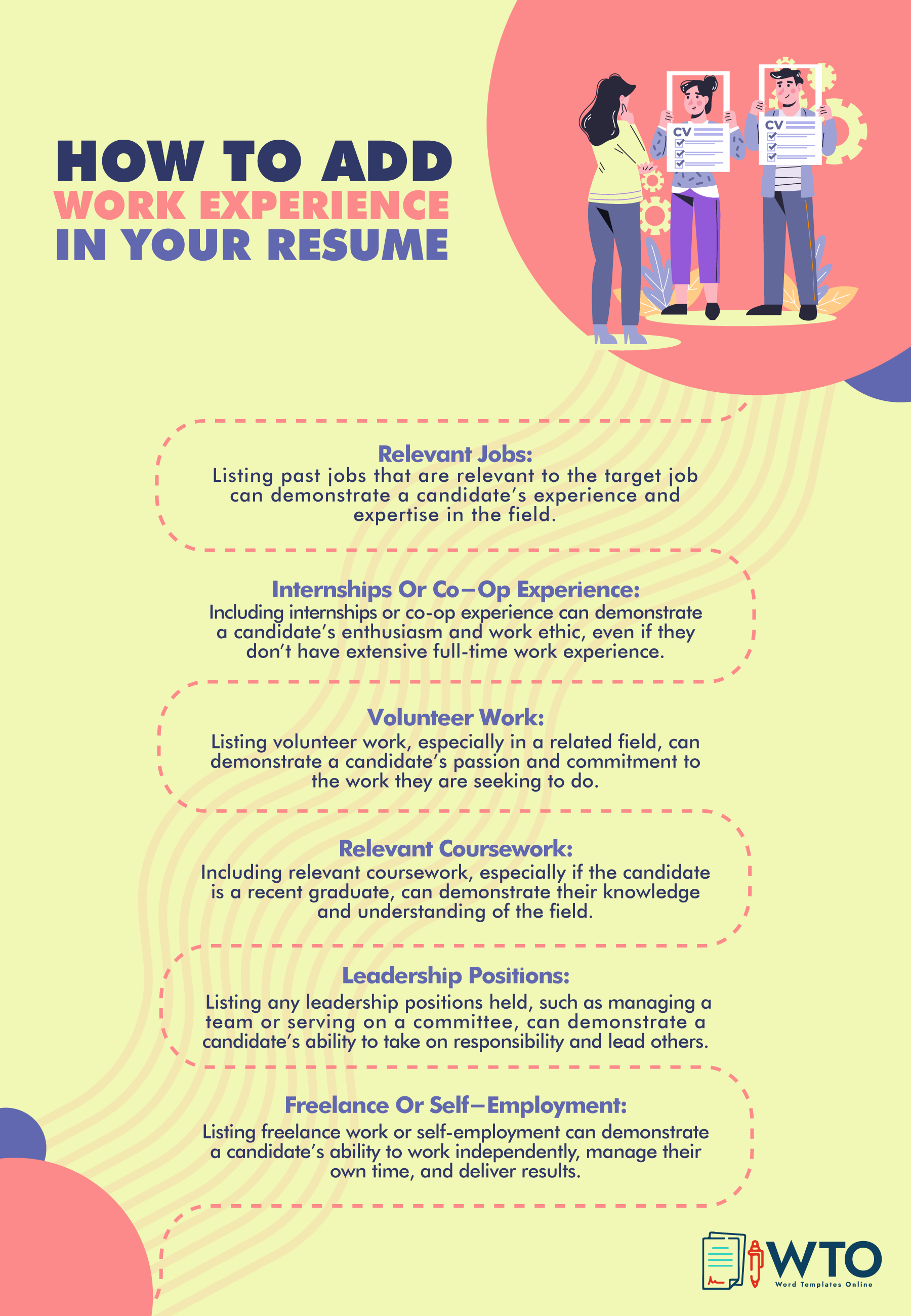
How Far Should Your Work History Go?
The answer to this question depends on the company and the job position you are applying for. In addition, different job positions require different levels of experience and expertise.
Lower-level and entry-level positions typically require 1–5 years of experience. However, senior-level jobs require a longer work history.
Scientific and academic fields also require a CV rather than a resume since it emphasizes your educational background in greater detail.
Tips For Adding Work Experience to Resume
Since most resumes typically follow a standard format and structure, here are some tips for making yours stand out from the rest:
Include result-oriented information
Including numbers and quantifying information on your resume will make you appear as a result-oriented individual. It will also lend credibility and support to your claims about your achievements and experience.
Use action verbs
Word choice in your resume is critical to determining if you will be shortlisted for an interview. The HR managers review hundreds of resumes during the hiring process. All of them contain similar phrases, verbs, formats, and structures.
Use strong words and action verbs to make your resume more readable and memorable. It would be best if you varied your action verbs to diversify your descriptions. Pay attention to the use of present and past tenses.
tip
A resume should be supportive and contextual to provide meaningful context behind your words. An incorrect example would be “Mitigated operational costs by increasing budget.” A correct example would look something like this: “Increased budget to cope with operational costs.”
Keep your job description simple
HR managers and present-day employers prefer simple sentences and bullet points. Therefore, they will not be interested if a resume contains lengthy and unclear descriptions.
Most of them will not read your resume in its entirety. Thus, be specific and focus on your accomplishments, skills, and abilities.
Keep your work experience description concise. It should contain up to four vital points.
Omit any negative experience
You are not obligated to state in your resume if a former employer fired you. But if HR managers raise this topic, it would be in your best interest to answer truthfully.
Avoid using pronouns
You should avoid using any pronouns and prepositions, including “I” and “the.”
Use bullet points when describing jobs
Use bullet points to avoid clutter and make your job descriptions more readable. Divide lengthy paragraphs into shorter, easier-to-read bullet points.
Distinguish yourself from the other candidates
Include any relevant information that makes you stand out from the rest of the competition.
EXAMPLE
Include information on leadership positions, honors, awards you have received, etc.
Check for grammar and spelling mistakes
Always proofread your resume. Be sure to pay close attention to any grammatical or typographical errors.
Key Takeaways
- Paying attention to longevity, timeliness, and relevance is important to creating a proper structure for the experience section of your resume.
- Choose a resume format that is suitable for your career progression. In most cases, a chronological format is the best option.
- Include all the relevant information regarding your work history, including any promotions.
- Different job positions require different levels of experience. Applying for entry-level positions requires little work experience (up to five years), while senior-level job positions usually require an experienced professional (5–10 years).
- Start your sentences with strong action verbs and keep them concise.
- Improve the readability of your resume by using bullet points.








